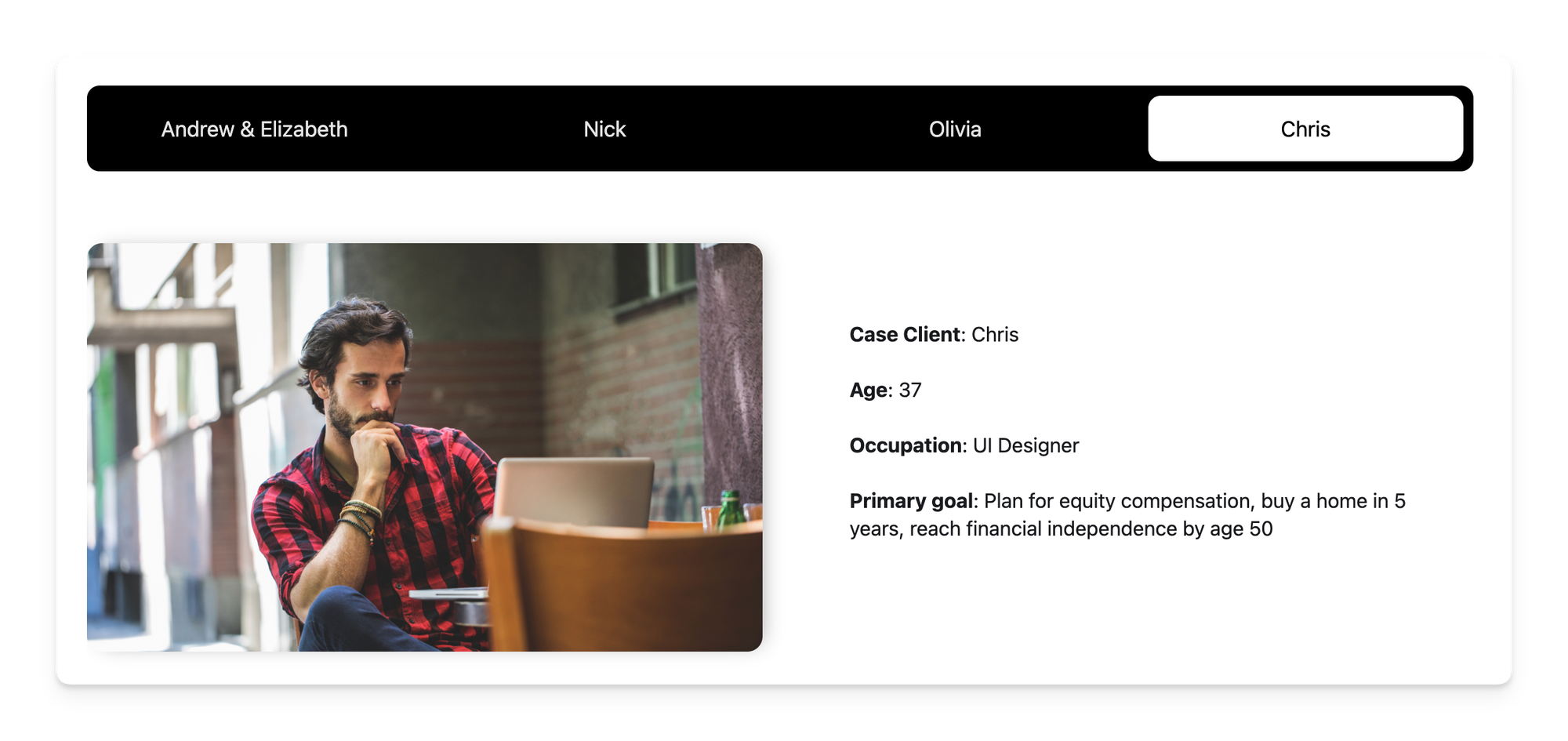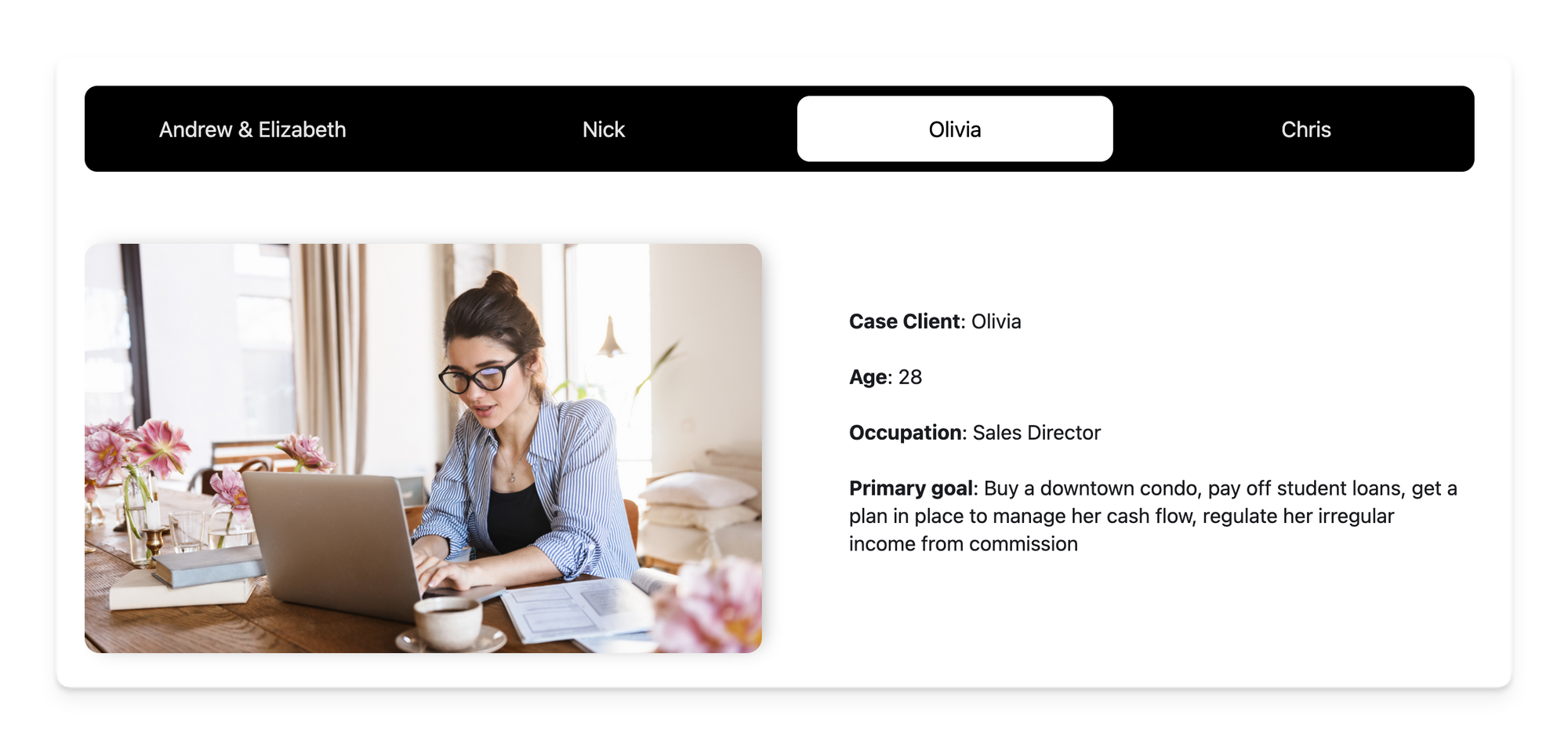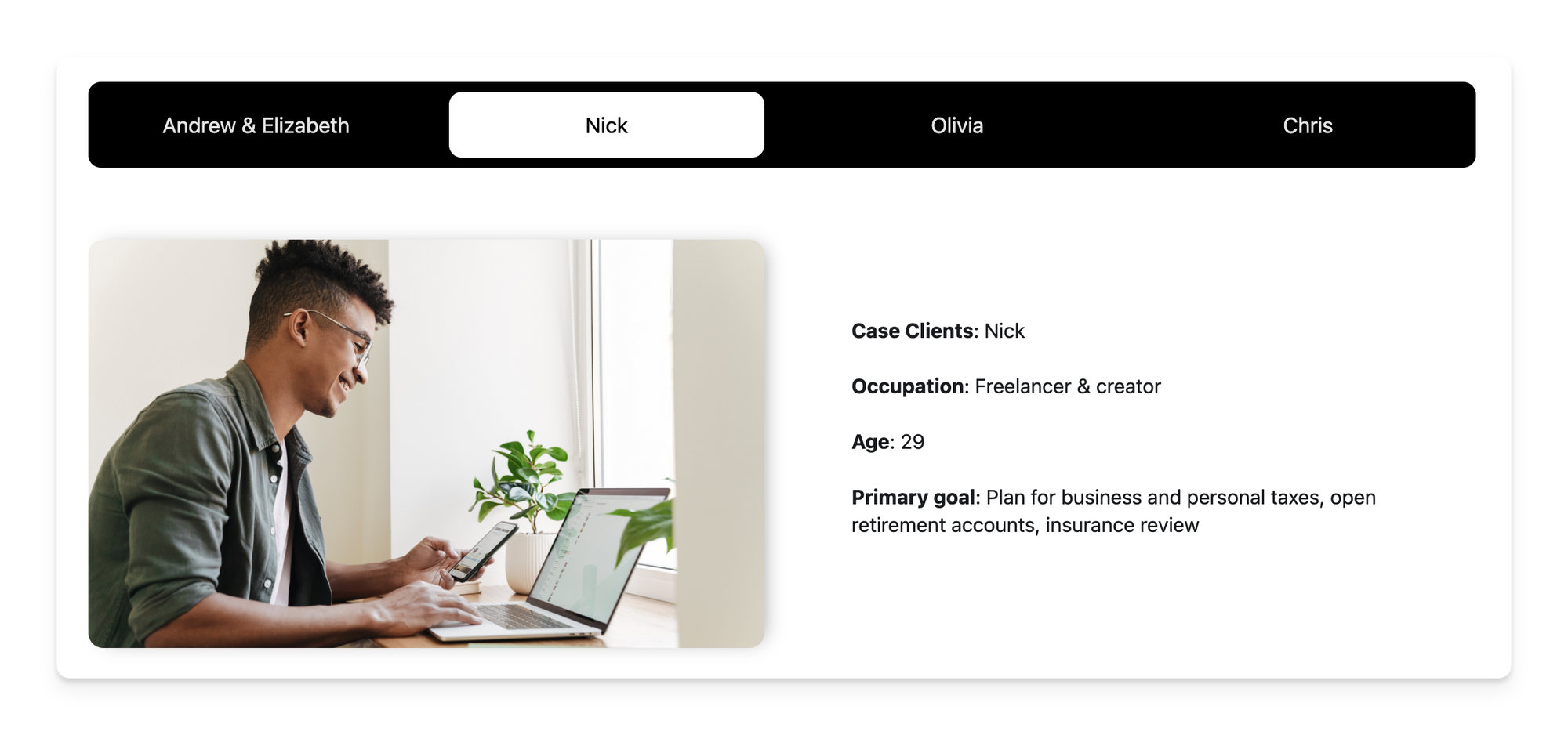How to Write Case Studies for Your Financial Advisor Website - YFCD #39
+ a simple framework to use for inspiration, using graphics in blog posts, how to create a website "welcome video"

Welcome back,
Piggybacking off last week's topic, I want to share a few steps to writing & creating financial planning case studies.
If you're not familiar with the term, in the context of financial planning websites, a "case study" is a short story that speaks to problems a potential client is facing & shows how your service helps solve said problems.
The main reasons to include them on your website are:
- They help ideal clients self-select into working together
- They showcase real financial planning
- They can replace a meaningless list of services
If you've been working with clients for awhile, you should know exactly what these problems & solutions are. If you're looking to grow with high-earning millennial families, their pain points will look a lot different than if you wanted to work primarily with retirees.
So the first step to writing a successful case study is to define your ideal client(s).
When doing so, I've found it best to highlight a few key areas of their life:
- Age
- Occupation(s)
- Primary financial goal(s)
These attributes help someone visiting your website understand if the service you provide is right for them.
If you wanted to take it a step further, you could add details for their location, asset levels, income, or personality traits.
On AllStreet's website, none of our "case clients" are over age 40 and in result, we get virtually no retirees reaching out to us. If we changed them tomorrow and focused the copywriting & problem/solutions to be more retirement-age, we'd probably lose some of our inbound lead flow.
Here are a few examples to help get ideas flowing for your own ideal client profiles:



Once you've created an ideal client profile, then you can start to map out common life situations & problems they face.
For me, the perfect client is a solo freelancer making $100,000+ (regardless of investable assets).
It's a broad demographic but through the format of a case study, you can paint a picture of the situation the person you want to work with is in. For example, below is my first attempt at writing a short background to speak to one area of that demographic:
The Situation
Nick's been building his freelance writing and creator business as a side hustle for the past few years while working a 9-5. Now, he's ready to take the leap and go all in on his passions.
He knows that taxes and available retirement accounts will be different as he transitions into self-employment and wants help getting everything straight. He will also be losing company-provided insurance so he would like to review coverages and costs.
Since I'm familiar with the transition myself & have worked with others in the same position, it was easy to write a few sentences about what someone would be going through.
If I wanted to speak to the same group but a different person, I'd write something that talks about how they've been freelancing for 10 years, making a good living & providing for their family, but want to plan more for financial independence, saving for college, and taking care of aging parents.
There are a million ways you could describe someone's financial life, so take some time to think about your ideal client, then write whatever comes to mind about their life stage, their family, financial questions, and goals.
Don't limit yourself in the ideation phase - it's always easier to delete unnecessary parts later than to come up with new ideas.
Here's another example of a case client's situation, but a little bit more in-depth:
The Situation
Andrew and Elizabeth have had successful careers that they've truly loved. They're both 10+ years into their careers and have saved very well, but are unsure what they want to do in the future.
They've been married for a while now and have spent most this time working, but now want to focus on building a family. The last 10 years have been fun but they haven’t spent much time making sure they optimize their finances, rather just saving what's leftover.
Plus, with a growing family comes new challenges. They want to see if one of them could work part time or even take a few years off to take care of their kids when they are young. They know they could easily live off one income as they both have high income jobs, but they want to know if they could provide for their kids, their kids’ college, and still retire when they want to while traveling and not giving up everything they enjoy in life.
They've done a great job of utilizing their company retirement programs plus they own a nice home, but other than that, the rest of their money is sitting in their savings account as they have been unsure of where and what to invest in.
Andrew and Elizabeth only know what they know. As they approach this new stage of life, they want an expert to help them make the right decisions for their family so they don’t have to worry about it. They are going to be busy enough building a family and managing their jobs.
Once you've defined your ideal client profile(s) and highlighted their situation, the last step is describing how the service you provide solves their problems.
Adding to our example of Andrew and Elizabeth above, this is what we wrote to show the results of working with a financial planner:
The Results
Andrew and Elizabeth were excited to get started with a financial planner who did more than just help with investments. They received a comprehensive plan that incorporated:
• A low-cost, tax-efficient investment strategy for retirement
• Cash flow planning to help figure out how to use their extra money for college, retirement, and everything in between
• Life insurance analysis to make sure their family was protected against events that could drastically hurt their financial picture
• College savings plan utilizing the best accounts for flexibility and taxes
• Automation for their investments & savings so they don’t have to spend time manually doing this every month
• A plan to show what life would look life if one salary was at 50% and 0% so they could determine what the best strategy would be for them moving forward
Now, Andrew and Elizabeth have a clear picture of where they are and where they're going. They're on track for all of their goals and feel empowered in their decisions. The best part about it all is that they finally have peace of mind around their finances and feel ready to have a family knowing that one of them can stay at home with the kids and raise them themselves.
The goal here should be to show the tangible tasks that get accomplished & the overall feeling someone gets when working with a financial planner.
And once you've briefly explained how financial planning makes an impact in someone's life, you're done 🥳
Don't overthink it.
The first case study you write won't be perfect. And if you'd like to have someone review/edit an attempt, feel free to send me an email at treyton@convertingattention.club with the case study text and I'll share some thoughts & feedback!
Case Study Recap
To write a case study that converts, you want to focus on three (3) key steps:
Step 1) Define your ideal client profile
Step 2) Define their situation/planning problems
Step 3) Describe how the service you provide solves their problems
Club:Curated
Read: How to Use a Graphic as the Starting Point for a Blog Post
